Getting to Know Imported Cheese
Issue Date:2022-02-16
"Cheese is power"
Cheese is known as "milk gold". It is not only a delicious food, but also a widely used food ingredient because of its high nutritional density and mellow taste. In recent years, with the continuous increase of national income and the increasingly obvious trend of diversified consumption, cheese has become a new growth driver of milk products consumption in China. Let's learn about imported cheese together.
I. Overview of Cheese
The Food and Agriculture Organization and the World Health Organization (FAO/WHO) assigned an internationally general definition of cheese as a fresh or fermented product made of milk, cream, skimmed milk or partially skimmed milk, cheese or the mixture of these products, which is curded by rennin or other milk coagulants and excluded of whey.

On November 22, 2021, a new national standard for cheese National Food Safety Standard - Cheese (GB54202021) was implemented. It replaced the original GB5420-2010, revised scope, terms and definitions, sensory requirements and microbiological limit, and added hardness and fat content claim.
National Food Safety Standard - Cheese (GB5420-2021) defined cheese as:
A mature or immature soft, semi-hard, hard or extra-hard milk product with possible coating, with the ratio of whey protein to casein not exceeding the corresponding ratio in cow milk (or milk from other dairy animals) (except for whey cheese). Cheese can be obtained by either of the following methods:
a) After the protein in milk and/or milk product is coagulated or partially coagulated under the action of rennin or other appropriate milk coagulants (or directly using coagulated curd as raw material), exclude or not exclude (if clotted milk is used as raw material) whey by adding or not adding fermentation strains, edible salt, food additives and food nutrition fortifier, and produce solid or semi-solid products by fermentation or non-fermentation; or
b) Incorporate the protein coagulation process of milk and/or milk product into the processing technology, and attribute the finished product with the similar physical, chemical and sensory characteristics to the products as described in a).
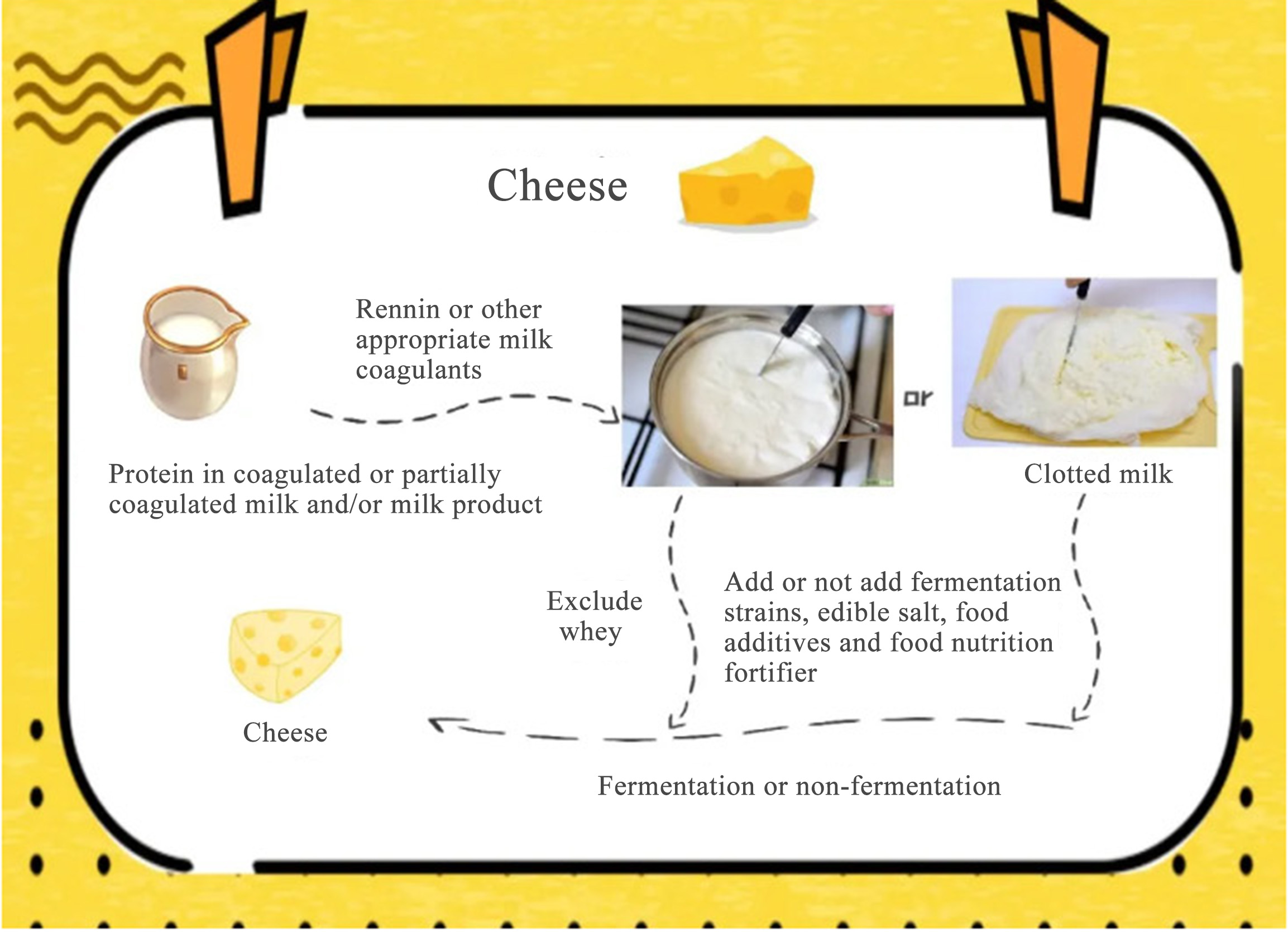
Note: In both processes a) and b), other raw food materials with specific flavor, such as white granulated sugar, garlic and pepper, can be added (with the volume of addition no more than 8%). The obtained solid products can be processed into various forms, and other raw food materials can be added (with the volume of addition no more than 8%) to prevent the products from sticking. The total volume of other raw food materials with specific flavor and other raw food materials to prevent the products from sticking shall not exceed 8%.
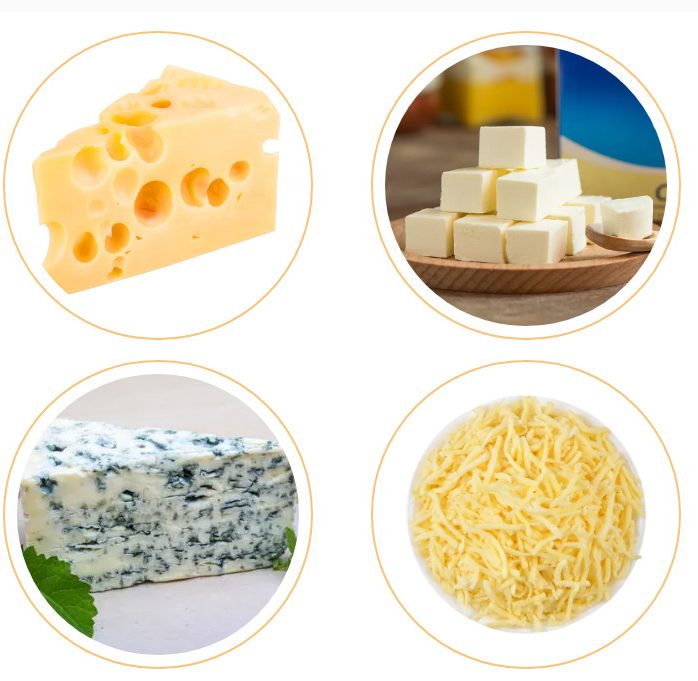
Cheese is rich in protein, fat, minerals, vitamins, trace components and other nutrients. The world famous cheese varieties include cottage cheese, cream cheese, Swiss cheese, mozzarella cheese, blue cheese and so on.
II. Requirements on Import of Cheese
In accordance with Article XCII, Chapter VI of the Food Safety Law of the People's Republic of China, the imported foods, food additives and food-related products shall comply with the national food safety standards of China. The imported cheese shall comply with the technical requirements specified in GB5420-2021 and other relevant national standards, specifically as follows:
01 Sensory Requirements
The sensory requirements are listed in the table below:
| Item |
Requirements |
| Color |
Normal color of the product. |
| Taste and smell |
Special and normal taste and smell of the product. |
| Texture |
Normal texture of the product. |
02 Limits of Pollutants and Mycotoxins
The limit of pollutant shall comply with GB2762, while that of Mycotoxins shall comply with GB2761.
03 Microbial Limits
Limit of pathogenic bacteria shall comply with GB29921, while microbial limit shall comply with the table below.
| Item |
Sampling Method a and Limit |
Inspection Method |
|||
| n |
c |
m |
M |
||
| Coliform bacteria /(CFU/g) |
5 |
2 |
102 |
103 |
GB 4789.3 |
| a The sampling and treatment of samples shall comply with GB 4789.1 and GB 4789.18. |
|||||
04 Food Additives and Nutrient Fortification Substances
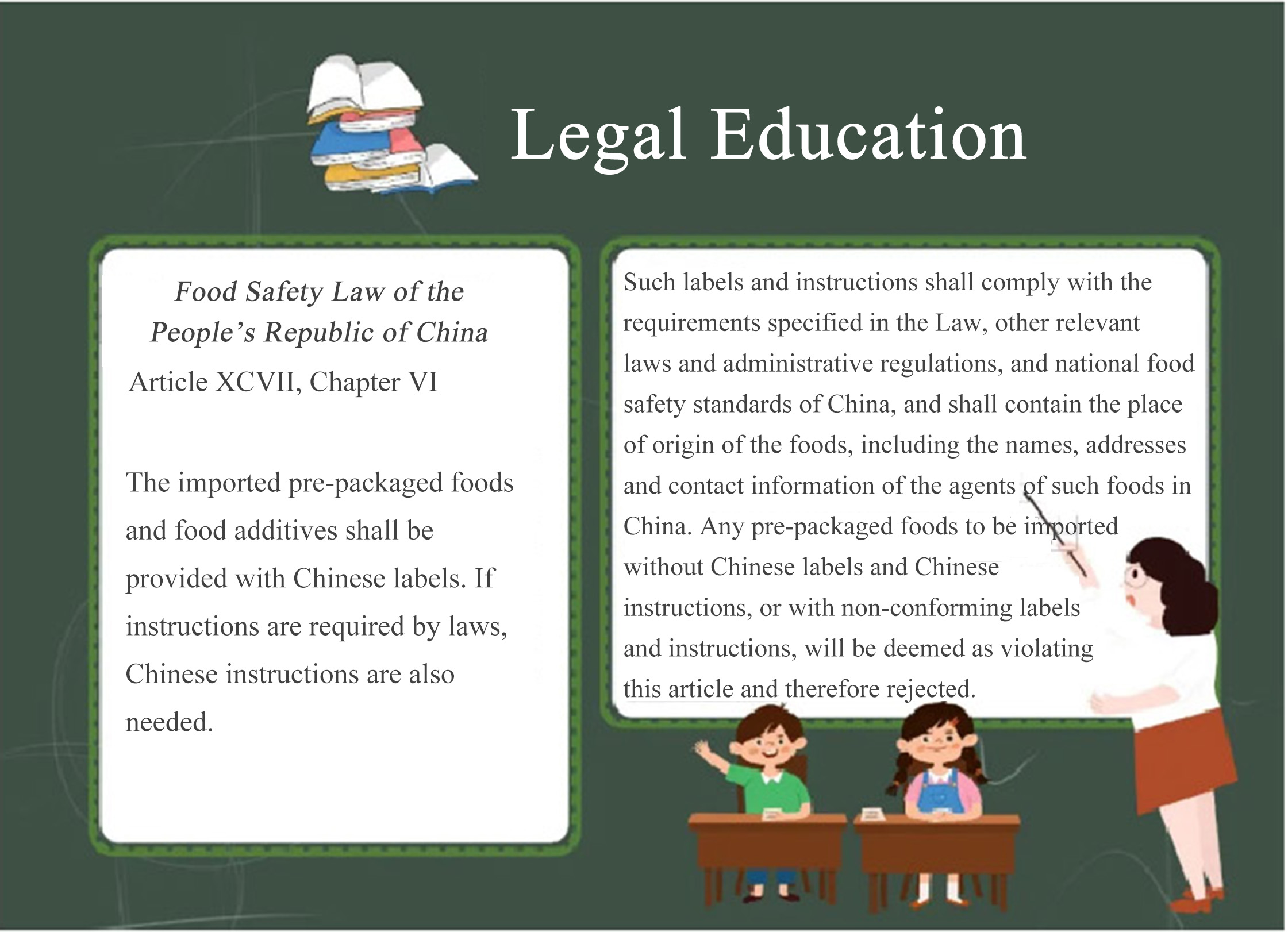
The imported cheese shall be provided with Chinese labels that contain food names, lists of ingredients, net weights and specifications, places of origin or regions (such as Hong Kong and Macao), legally registered agents, importers or distributors in China (including their names, addresses and contact information), production dates and shelf lives, storage conditions etc. Moreover, it is also specified in GB5420-2021 that:
(1) Cheese is also called "milk curd";
(2) Appropriate temperatures for transportation and storage shall also be clearly indicated on the labels;
(3) The descriptive terms for hardness or fat content before "cheese" are applicable to the product names, as listed in the table below:
| Item |
Descriptive Term |
Content requirements |
| Proportion of water to fat-free ingredients of cheese a/% |
Soft |
>67 |
| Hard/semi-hard |
54~69 |
|
| Hard |
49~56 |
|
| Ultra-hard |
51 |
|
| Proportion of fat to dry substances b/% |
High fat content |
≥60 |
| Full fat content |
≥45,<60 |
|
| Medium fat content |
≥25,<45 |
|
| Partly skimmed |
≥10,<25 |
|
| Skimmed |
<10 |
|
| aProportion of water to fat-free ingredients of cheese=x100%. b Proportion of fat to dry substances=x100%. |
||
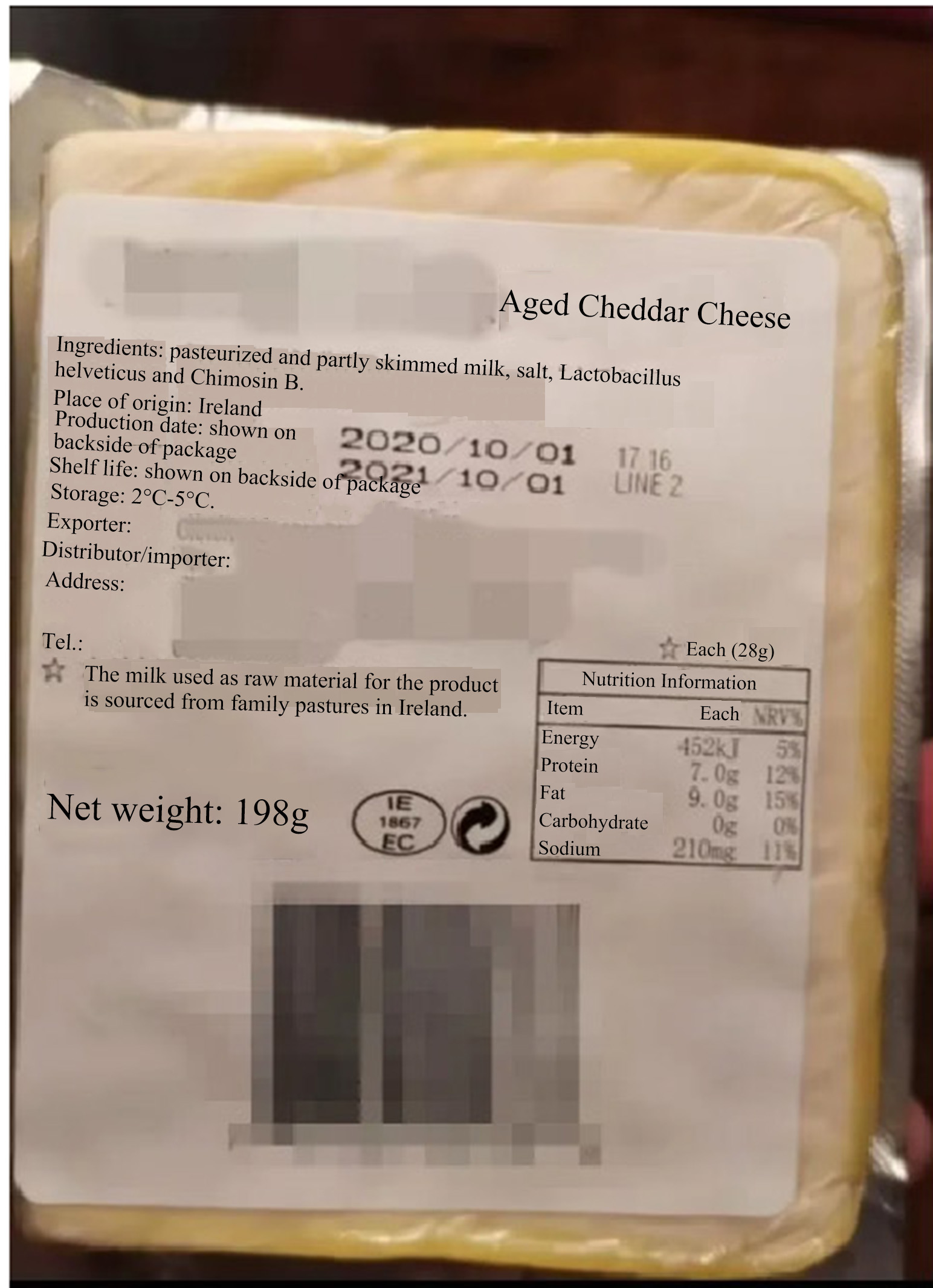
III. Customs Clearance for Imported Cheese
The Measures for the Safety Administration of Imported and Exported Food of the People's Republic of China (Order No. 249 of the General Administration of Customs) was formally implemented from January 1, 2022. How many steps are there to import cheese to Chinese markets as per this Order No. 249? This Chapter will answer this question.
01 Food Safety Evaluation of Country (Region) of Export
The General Administration of Customs can conduct an evaluation and review on the food safety management system and food safety status of a foreign country or region, and according to the evaluated and reviewed results determine corresponding inspection and quarantine requirements.
Catalogue of Food Exported to China from Countries or Regions which Comply with Assessment and Review Requirements or Have Traditional Trading Relationships with China can be found on the website of the General Administration of Customs at http:/43.248.49.223/.
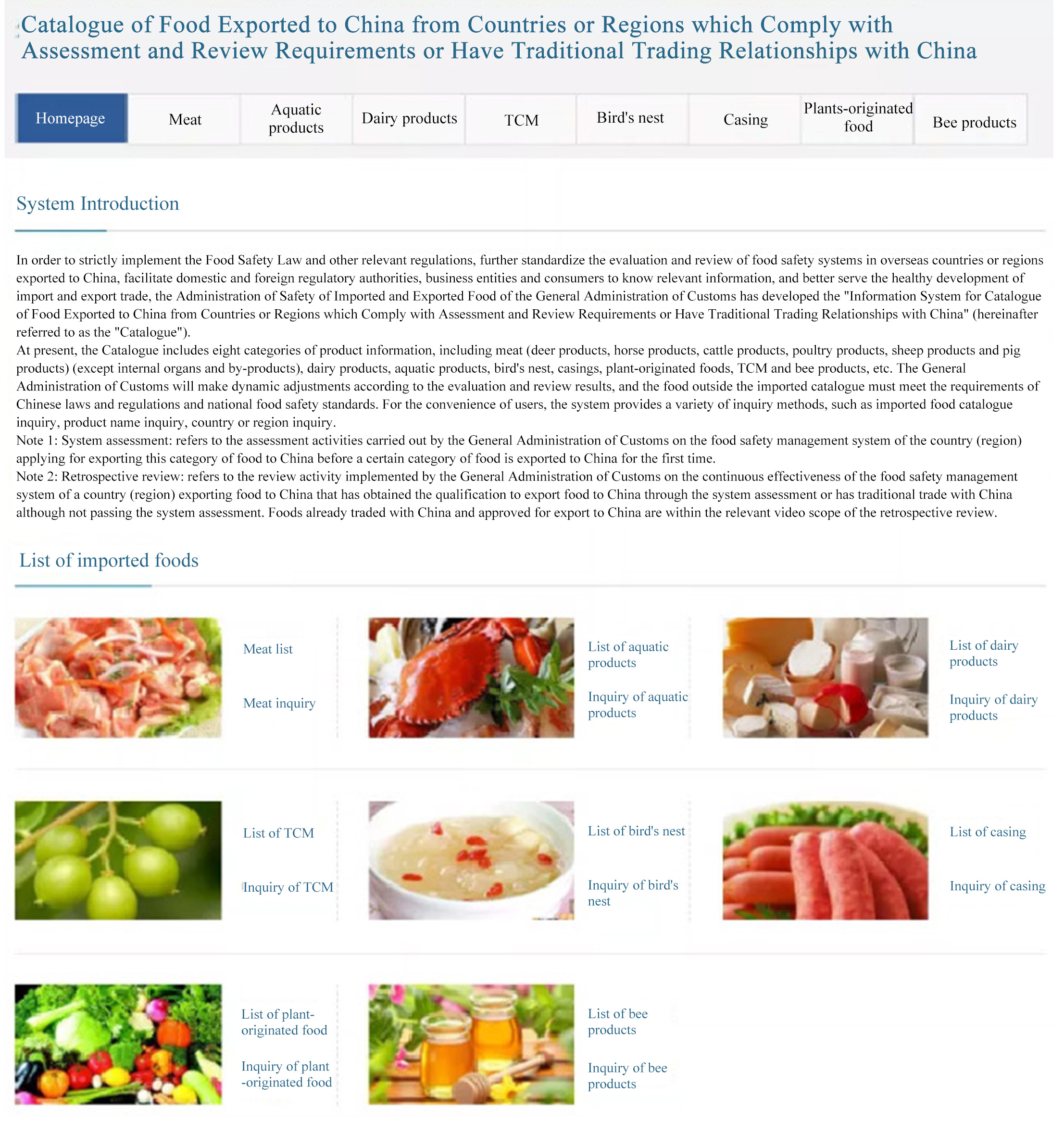
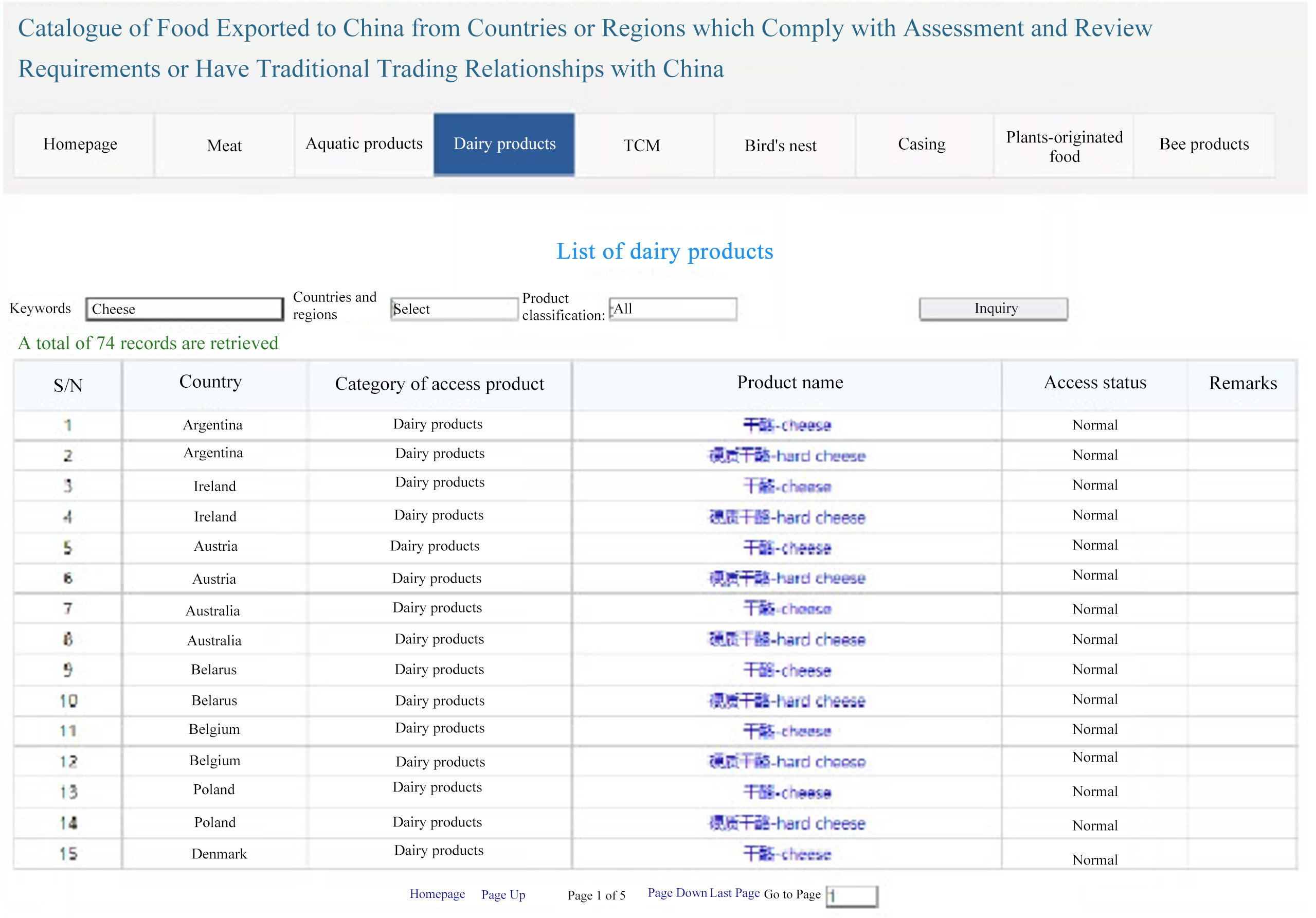
02 Registration for overseas manufacturer
The General Administration of Customs shall exercise registration administration of overseas production enterprises that export food to China, and release a list of registered enterprises.
.
Inquiry website:
https://ciferquery.singlewindow.cn/
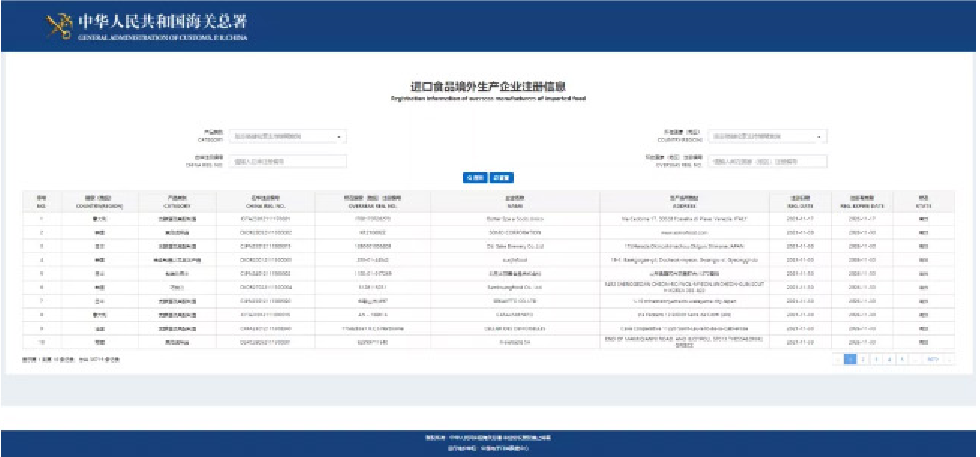
03 Issuing of Health Certificate
Imported dairy products shall be accompanied by a Health Certificate issued by the competent government authority of the exporting country or region.
The Certificate shall be stamped by the competent government authority of the exporting country or region and signed by its authorized person, and the destination shall be marked as the People's Republic of China. Samples of Health Certificate shall be confirmed by the General Administration of Customs.
04 Filing of Importers and Exporters
The overseas exporters and agents exporting food into China shall go through the filing formalities at the General Administration of Customs.
A food importer shall make a filing with the customs office in the place of its domicile.
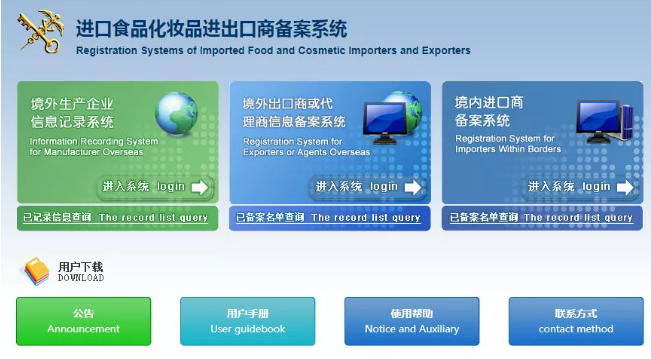
05 Declaration
A food importer or its agent shall truthfully file a declaration with the customs office when importing food.
06 On-site Inspection
The customs office shall conducts on-site inspection of imported food at the request of supervision and management.
The on-site inspection shall be carried out in accordance with the requirements of Article 28 of Chapter 2 of the Measures for the Safety Administration of Imported and Exported Food of the People's Republic of China (Order No. 249 of the General Administration of Customs).
07 Supervision and Sampling Inspection
The customs office shall formulate and organize the implementation of an annual national import food safety supervisory sampling inspection plan and a special import food safety supervisory sampling inspection plan to check whether the contaminants of imported cheese meet the requirements.
08 Conformity Assessment
Import food can be permitted only after being accepted through conformity assessment by customs office.
Customs office shall issue certificate of non-conformity for the import food failing such conformity assessment by customs office, where for such non-conformity involving safety, health and environmental protection, customs office shall give a written notice to food importer, to order the latter to destruct or return this kind of food. For other types of non-conformity, corresponding import food can be permitted after having met the requirements stipulated in conformity assessment by means of technical treatment. For corresponding import food that fails such technical treatment or still fails to meet relevant requirements after the technical treatment within a prescribed time period, the customs office shall order the food importer to destruct or return this kind of food.

IV. How to purchase imported cheese
How to choose a wide variety of imported cheese? Four "attentions" shall be paid:
01 Pay attention to purchasing channel
Select formal channels for purchasing, with more secure goods.
02 Pay attention to Chinese labels
(1) Product Category. Pay attention to distinguishing between natural cheese and processed cheese. In addition to the natural cheese mentioned herein, another category of processed cheese occupies a large market share.
National Standard for Food Safety- Processed Cheese (GB 25192-2021) defines processed cheese as a product made by heating, stirring, emulsification and other processes with emulsifying salt, with or without adding other raw materials with cheese (>15%) as the main raw material.

Due to the different production processes, the processed cheese has better preservation and taste and richer varieties, while the natural cheese retains the natural flavor of the cheese and higher nutrient density. Therefore, consumers should pay attention to the labeling of brand name and category on the Chinese label when purchasing imported cheese.
In addition, different product categories are selected according to specific cooking uses, such as:
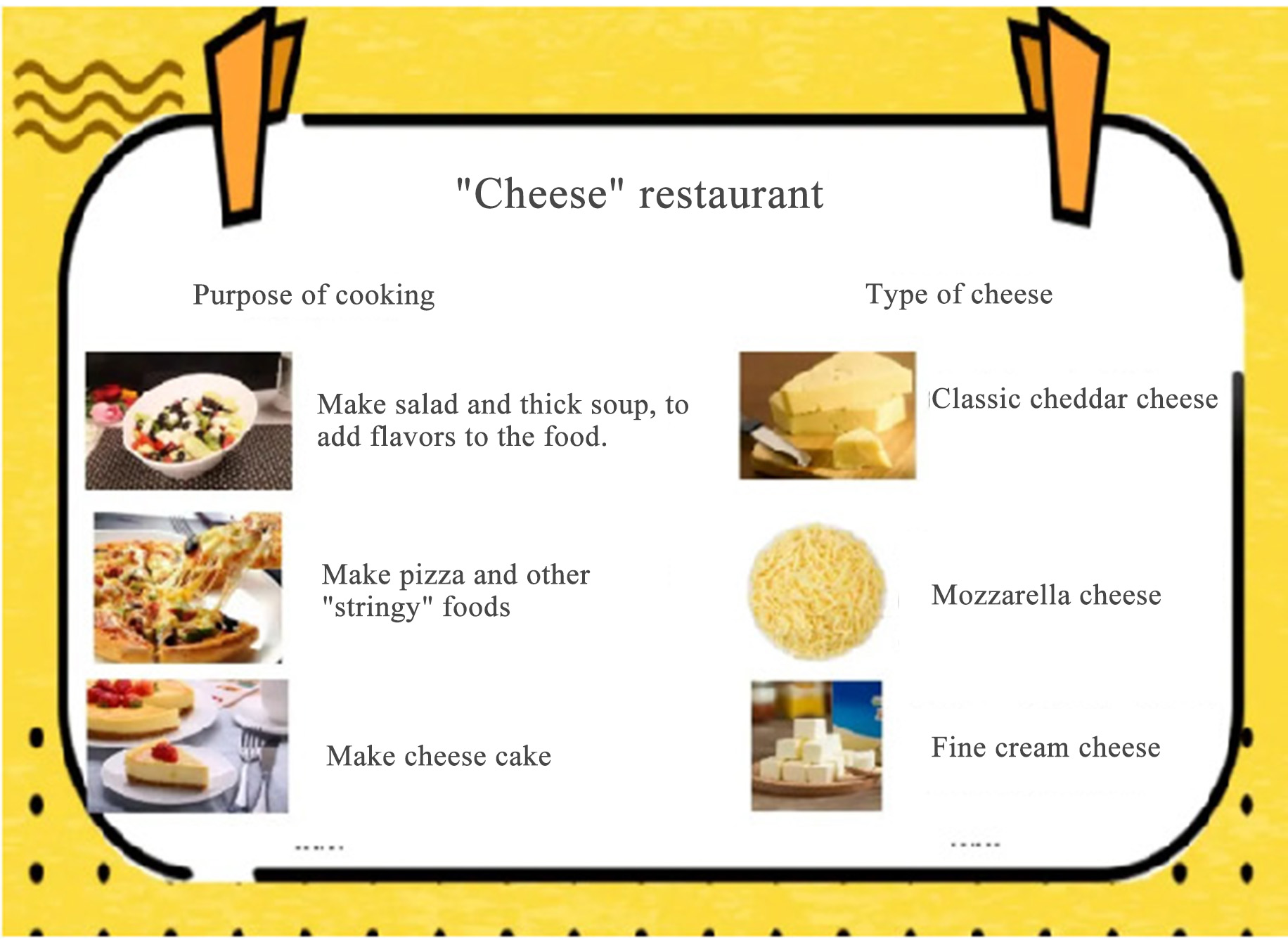
(2) Composition: Know the types of raw milk, fermentation strains, food additives, etc. of imported cheese and purchase them as needed.
(3) Nutrition information: Cheese with high protein and calcium and low sodium are better for health.
(4) Production date and shelf life: Dairy products are rich in nutrients, and expired products will cause harmful substances to damage health and may not be consumed. In addition, it shall be stored at the storage temperature indicated on the imported cheese label and consumed within the shelf life.
03 Pay attention to package
Observe whether the package is in good condition and free of impurities, free moisture, fat, swelling bags, etc.
Obtain a copy of the Inspection and Quarantine Certificate of Imported Goods issued by the customs office from the merchant to check whether the information such as commodity name, country of origin, date of production, shelf life, batch number is consistent.
Source: Reprinted from 12360 Customs Hotline by Guanwuxiaoer.